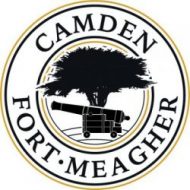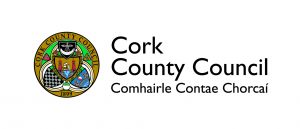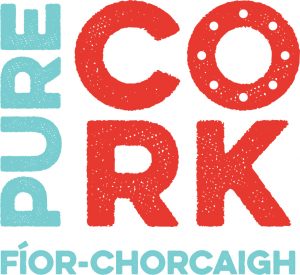Deprecated: Using ${var} in strings is deprecated, use {$var} instead in /home/camdenfo/public_html/wp-content/themes/Divi/includes/builder/module/settings/migration/ColumnOptions.php on line 95
Deprecated: Using ${var} in strings is deprecated, use {$var} instead in /home/camdenfo/public_html/wp-content/themes/Divi/includes/builder/module/settings/migration/ColumnOptions.php on line 95
Deprecated: Using ${var} in strings is deprecated, use {$var} instead in /home/camdenfo/public_html/wp-content/themes/Divi/includes/builder/module/settings/migration/ColumnOptions.php on line 97
Deprecated: Using ${var} in strings is deprecated, use {$var} instead in /home/camdenfo/public_html/wp-content/themes/Divi/includes/builder/module/settings/migration/ColumnOptions.php on line 97
Deprecated: Using ${var} in strings is deprecated, use {$var} instead in /home/camdenfo/public_html/wp-content/themes/Divi/includes/builder/module/settings/migration/ColumnOptions.php on line 103
Deprecated: Using ${var} in strings is deprecated, use {$var} instead in /home/camdenfo/public_html/wp-content/themes/Divi/includes/builder/module/settings/migration/ColumnOptions.php on line 103
Deprecated: Using ${var} in strings is deprecated, use {$var} instead in /home/camdenfo/public_html/wp-content/themes/Divi/includes/builder/module/settings/migration/ColumnOptions.php on line 105
Deprecated: Using ${var} in strings is deprecated, use {$var} instead in /home/camdenfo/public_html/wp-content/themes/Divi/includes/builder/module/settings/migration/ColumnOptions.php on line 105
Deprecated: Using ${var} in strings is deprecated, use {$var} instead in /home/camdenfo/public_html/wp-content/themes/Divi/includes/builder/module/settings/migration/ColumnOptions.php on line 130
Deprecated: Using ${var} in strings is deprecated, use {$var} instead in /home/camdenfo/public_html/wp-content/themes/Divi/includes/builder/module/settings/migration/ColumnOptions.php on line 130
Deprecated: Using ${var} in strings is deprecated, use {$var} instead in /home/camdenfo/public_html/wp-content/themes/Divi/includes/builder/module/settings/migration/ColumnOptions.php on line 132
Deprecated: Using ${var} in strings is deprecated, use {$var} instead in /home/camdenfo/public_html/wp-content/themes/Divi/includes/builder/module/settings/migration/ColumnOptions.php on line 132
Deprecated: Using ${var} in strings is deprecated, use {$var} instead in /home/camdenfo/public_html/wp-content/themes/Divi/includes/builder/module/settings/migration/ColumnOptions.php on line 161
Deprecated: Using ${var} in strings is deprecated, use {$var} instead in /home/camdenfo/public_html/wp-content/themes/Divi/includes/builder/module/settings/migration/ColumnOptions.php on line 161
Deprecated: Using ${var} in strings is deprecated, use {$var} instead in /home/camdenfo/public_html/wp-content/themes/Divi/includes/builder/module/settings/migration/ColumnOptions.php on line 161
Deprecated: Using ${var} in strings is deprecated, use {$var} instead in /home/camdenfo/public_html/wp-content/themes/Divi/includes/builder/module/settings/migration/ColumnOptions.php on line 162
Deprecated: Using ${var} in strings is deprecated, use {$var} instead in /home/camdenfo/public_html/wp-content/themes/Divi/includes/builder/module/settings/migration/ColumnOptions.php on line 162
Deprecated: Using ${var} in strings is deprecated, use {$var} instead in /home/camdenfo/public_html/wp-content/themes/Divi/includes/builder/module/settings/migration/ColumnOptions.php on line 162
Deprecated: Using ${var} in strings is deprecated, use {$var} instead in /home/camdenfo/public_html/wp-content/themes/Divi/includes/builder/module/settings/migration/ColumnOptions.php on line 205
Deprecated: Using ${var} in strings is deprecated, use {$var} instead in /home/camdenfo/public_html/wp-content/themes/Divi/includes/builder/module/settings/migration/ColumnOptions.php on line 205
Deprecated: Using ${var} in strings is deprecated, use {$var} instead in /home/camdenfo/public_html/wp-content/themes/Divi/includes/builder/module/settings/migration/ColumnOptions.php on line 205
Deprecated: Using ${var} in strings is deprecated, use {$var} instead in /home/camdenfo/public_html/wp-content/themes/Divi/includes/builder/module/settings/migration/ColumnOptions.php on line 205
Deprecated: Using ${var} in strings is deprecated, use {$var} instead in /home/camdenfo/public_html/wp-content/themes/Divi/includes/builder/module/settings/migration/ColumnOptions.php on line 207
Deprecated: Using ${var} in strings is deprecated, use {$var} instead in /home/camdenfo/public_html/wp-content/themes/Divi/includes/builder/module/settings/migration/ColumnOptions.php on line 207
Deprecated: Using ${var} in strings is deprecated, use {$var} instead in /home/camdenfo/public_html/wp-content/themes/Divi/includes/builder/module/settings/migration/ColumnOptions.php on line 207
Deprecated: Creation of dynamic property ET_Builder_Section::$_original_content is deprecated in /home/camdenfo/public_html/wp-content/themes/Divi/includes/builder/class-et-builder-element.php on line 1315
Deprecated: Creation of dynamic property ET_Builder_Module_Field_Border::$template is deprecated in /home/camdenfo/public_html/wp-content/themes/Divi/includes/builder/module/field/Border.php on line 48
Deprecated: Using ${var} in strings is deprecated, use {$var} instead in /home/camdenfo/public_html/wp-content/themes/Divi/includes/builder/module/field/Position.php on line 198
Deprecated: Using ${var} in strings is deprecated, use {$var} instead in /home/camdenfo/public_html/wp-content/themes/Divi/includes/builder/module/field/Position.php on line 199
Deprecated: Using ${var} in strings is deprecated, use {$var} instead in /home/camdenfo/public_html/wp-content/themes/Divi/includes/builder/module/field/Position.php on line 200
Deprecated: Using ${var} in strings is deprecated, use {$var} instead in /home/camdenfo/public_html/wp-content/themes/Divi/includes/builder/module/field/Position.php on line 500
Deprecated: Using ${var} in strings is deprecated, use {$var} instead in /home/camdenfo/public_html/wp-content/themes/Divi/includes/builder/module/field/Position.php on line 583
Deprecated: Using ${var} in strings is deprecated, use {$var} instead in /home/camdenfo/public_html/wp-content/themes/Divi/includes/builder/module/field/Transform.php on line 79
Deprecated: Using ${var} in strings is deprecated, use {$var} instead in /home/camdenfo/public_html/wp-content/themes/Divi/includes/builder/module/field/Transform.php on line 79
Deprecated: Using ${var} in strings is deprecated, use {$var} instead in /home/camdenfo/public_html/wp-content/themes/Divi/includes/builder/module/field/Transform.php on line 98
Deprecated: Using ${var} in strings is deprecated, use {$var} instead in /home/camdenfo/public_html/wp-content/themes/Divi/includes/builder/module/field/Transform.php on line 98
Deprecated: Using ${var} in strings is deprecated, use {$var} instead in /home/camdenfo/public_html/wp-content/themes/Divi/includes/builder/module/field/Transform.php on line 117
Deprecated: Using ${var} in strings is deprecated, use {$var} instead in /home/camdenfo/public_html/wp-content/themes/Divi/includes/builder/module/field/Transform.php on line 117
Deprecated: Using ${var} in strings is deprecated, use {$var} instead in /home/camdenfo/public_html/wp-content/themes/Divi/includes/builder/module/field/Transform.php on line 117
Deprecated: Using ${var} in strings is deprecated, use {$var} instead in /home/camdenfo/public_html/wp-content/themes/Divi/includes/builder/module/field/Transform.php on line 136
Deprecated: Using ${var} in strings is deprecated, use {$var} instead in /home/camdenfo/public_html/wp-content/themes/Divi/includes/builder/module/field/Transform.php on line 136
Deprecated: Using ${var} in strings is deprecated, use {$var} instead in /home/camdenfo/public_html/wp-content/themes/Divi/includes/builder/module/field/Transform.php on line 157
Deprecated: Using ${var} in strings is deprecated, use {$var} instead in /home/camdenfo/public_html/wp-content/themes/Divi/includes/builder/module/field/Transform.php on line 157
Deprecated: Using ${var} in strings is deprecated, use {$var} instead in /home/camdenfo/public_html/wp-content/themes/Divi/includes/builder/module/field/Transform.php on line 199
Deprecated: Using ${var} in strings is deprecated, use {$var} instead in /home/camdenfo/public_html/wp-content/themes/Divi/includes/builder/module/field/Transform.php on line 200
Deprecated: Using ${var} in strings is deprecated, use {$var} instead in /home/camdenfo/public_html/wp-content/themes/Divi/includes/builder/module/field/Transform.php on line 201
Deprecated: Using ${var} in strings is deprecated, use {$var} instead in /home/camdenfo/public_html/wp-content/themes/Divi/includes/builder/module/field/Transform.php on line 203
Deprecated: Using ${var} in strings is deprecated, use {$var} instead in /home/camdenfo/public_html/wp-content/themes/Divi/includes/builder/module/field/Transform.php on line 204
Deprecated: Using ${var} in strings is deprecated, use {$var} instead in /home/camdenfo/public_html/wp-content/themes/Divi/includes/builder/module/field/Transform.php on line 205
Deprecated: Using ${var} in strings is deprecated, use {$var} instead in /home/camdenfo/public_html/wp-content/themes/Divi/includes/builder/module/field/Transform.php on line 206
Deprecated: Using ${var} in strings is deprecated, use {$var} instead in /home/camdenfo/public_html/wp-content/themes/Divi/includes/builder/module/field/Transform.php on line 207
Deprecated: Using ${var} in strings is deprecated, use {$var} instead in /home/camdenfo/public_html/wp-content/themes/Divi/includes/builder/module/field/Transform.php on line 364
Deprecated: Using ${var} in strings is deprecated, use {$var} instead in /home/camdenfo/public_html/wp-content/themes/Divi/includes/builder/module/field/Transform.php on line 364
Deprecated: Using ${var} in strings is deprecated, use {$var} instead in /home/camdenfo/public_html/wp-content/themes/Divi/includes/builder/module/field/Transform.php on line 565
Deprecated: Creation of dynamic property ET_Builder_Module_Helper_MultiViewOptions::$inherited_props is deprecated in /home/camdenfo/public_html/wp-content/themes/Divi/includes/builder/module/helpers/MultiViewOptions.php on line 686
Deprecated: Creation of dynamic property ET_Builder_Module_Field_Divider::$count is deprecated in /home/camdenfo/public_html/wp-content/themes/Divi/includes/builder/main-structure-elements.php on line 1498
Deprecated: Creation of dynamic property ET_Builder_Row::$_original_content is deprecated in /home/camdenfo/public_html/wp-content/themes/Divi/includes/builder/class-et-builder-element.php on line 1315
Deprecated: Creation of dynamic property ET_Builder_Column::$_original_content is deprecated in /home/camdenfo/public_html/wp-content/themes/Divi/includes/builder/class-et-builder-element.php on line 1315
Deprecated: Creation of dynamic property ET_Builder_Module_Text::$text_shadow is deprecated in /home/camdenfo/public_html/wp-content/themes/Divi/includes/builder/class-et-builder-element.php on line 1315
Deprecated: Creation of dynamic property ET_Builder_Module_Text::$margin_padding is deprecated in /home/camdenfo/public_html/wp-content/themes/Divi/includes/builder/class-et-builder-element.php on line 1315
Deprecated: Creation of dynamic property ET_Builder_Module_Text::$_additional_fields_options is deprecated in /home/camdenfo/public_html/wp-content/themes/Divi/includes/builder/class-et-builder-element.php on line 1315
Deprecated: Creation of dynamic property ET_Builder_Module_Text::$_original_content is deprecated in /home/camdenfo/public_html/wp-content/themes/Divi/includes/builder/class-et-builder-element.php on line 1315
Deprecated: Creation of dynamic property ET_Builder_Module_Helper_MultiViewOptions::$inherited_props is deprecated in /home/camdenfo/public_html/wp-content/themes/Divi/includes/builder/module/helpers/MultiViewOptions.php on line 686
Deprecated: Creation of dynamic property ET_Builder_Module_Helper_MultiViewOptions::$inherited_props is deprecated in /home/camdenfo/public_html/wp-content/themes/Divi/includes/builder/module/helpers/MultiViewOptions.php on line 686
Deprecated: Creation of dynamic property ET_Builder_Row_Inner::$_original_content is deprecated in /home/camdenfo/public_html/wp-content/themes/Divi/includes/builder/class-et-builder-element.php on line 1315
Deprecated: Creation of dynamic property ET_Builder_Module_Helper_MultiViewOptions::$inherited_props is deprecated in /home/camdenfo/public_html/wp-content/themes/Divi/includes/builder/module/helpers/MultiViewOptions.php on line 686
Deprecated: Creation of dynamic property ET_Builder_Module_Helper_MultiViewOptions::$inherited_props is deprecated in /home/camdenfo/public_html/wp-content/themes/Divi/includes/builder/module/helpers/MultiViewOptions.php on line 686
Deprecated: Creation of dynamic property ET_Builder_Module_Helper_MultiViewOptions::$inherited_props is deprecated in /home/camdenfo/public_html/wp-content/themes/Divi/includes/builder/module/helpers/MultiViewOptions.php on line 686
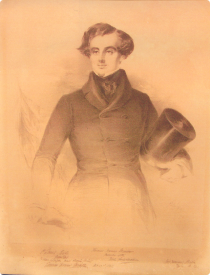 Thomas Francis Meagher
Thomas Francis Meagher
(August 3, 1823 – July 1, 1867)
When the Forts in Cork harbour where handed back to the peolple of Ireland on July 11 1938 it was decided to name them after famous Irish figures instead of the forts being named after famous British figures. Fort Camden Became Dun un Meagher after Thomas Francis Meagher. Fort Westmooreland (spike) became Fort Mitchell Fort Carsile became Fort Davis.
Thomas Francis Meagher who became known as “Meagher Of The Sword” was born in Waterford, Ireland in 1823. He was educated by the Jesuits in Clongowes Wood College, County Kildare, where, at an early age he displayed oratorical skills that were to become a hallmark of his career. He later studied under other Jesuits at Stonyhurst College, in Lancashire, England, where he completed his education in 1843.
He joined Daniel O’ Connell’s Repeal movement in the early 1840’s where his oratorical skills were used to make the case for a sovereign Ireland. He was compared favorably with Wolfe Tone and Robert Emmet. In 1846, Meagher made his first speech on a crowded political platform, in Conciliation Hall in Dublin. His speech made a lasting impression on Young Irelander, William Smith O’ Brien who chaired the event.When the ‘peace resolutions’ were introduced, Meagher was expected to subscribe to the doctrine that the use of arms was at all times unjustifiable and immoral, a doctrine he abhorred.Instead, he delivered a speech that has never been surpassed for its brilliancy and lyrical grandeur.The following brief excerpt from that speech shows why he was called “Meagher of the Sword,”. “Abhor the sword – stigmatize the sword? No, for at its blow a giant nation started from the waters of the Atlantic, and by its redeeming magic, and in the quivering of its crimsoned light, the crippled colony sprang into the attitude of a proud Republic.”
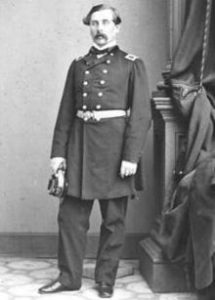 In 1849 he made two anti-Union speeches that were transcribed by English agents.As a consequence he was arrested, charged with treason and sentenced to be hung, drawn and quartered. His body was to be disposed of as determined by the English queen. The colonial governor of Ireland exercised the option of transportation, and on the 29th July 1849, he, with O’Brien, McManus, and O’Donohue was sent to Van Diemen’s Land (Tasmania), Australia. Early in 1852 he escaped from Tasmania and arrived in New York in late May via San Francisco. He soon became a popular lecturer, and in 1853 published a volume of his speeches on “The Legislative Independence of Ireland.” He traveled a great deal during that period and drew large crowds to hear him speak for the cause of Irish freedom.
In 1849 he made two anti-Union speeches that were transcribed by English agents.As a consequence he was arrested, charged with treason and sentenced to be hung, drawn and quartered. His body was to be disposed of as determined by the English queen. The colonial governor of Ireland exercised the option of transportation, and on the 29th July 1849, he, with O’Brien, McManus, and O’Donohue was sent to Van Diemen’s Land (Tasmania), Australia. Early in 1852 he escaped from Tasmania and arrived in New York in late May via San Francisco. He soon became a popular lecturer, and in 1853 published a volume of his speeches on “The Legislative Independence of Ireland.” He traveled a great deal during that period and drew large crowds to hear him speak for the cause of Irish freedom.
Meagher was admitted to the New York Bar in 1855.In 1856, together with John Savage he started the “Irish News”, which continued publication for several years.
At the onset of the civil war in 1861, he choose to support the Union cause and raised a company of “Irish Zouaves” for the 69th N.Y. Regiment. At the first battle of Bull Run he served as acting Major of the regiment and led his men in battle with characteristic gallantry. He next organized the Irish Brigade, raising over 7,000 men. In November of 1861 he left New York for Washington with the first regiment of the Irish Brigade; other regiments followed in rapid succession. In 1862, he was appointed Brigadier General.
Meagher’s Irish Brigade went on to distinguish itself at Mechanicsville, Fair Oaks, Peach Orchard, Malvern Hill and later at Antietam. Here in Western Maryland, Meagher’s Brigade of five regiments approached a well-protected Confederate force in a lane bordered with a stone wall, triggering a fierce engagement that left hundreds of dead and wounded on both sides, giving the scene its memorable name, The Bloody Lane. One observer described the Irish troops, with green flags flying (made by Tiffany, using embroidered ancient Fenian and Gaelic mottoes, and even today on view at the Armory on Lexington Avenue in New York), comparing them as if a brigade on parade, with bayonets fixed, in serried ranks and closing in on the Confederates, their purpose to insert themselves between the men of the brilliant Stonewall Jackson and the gallant campaigners of General Longstreet. Even under fire, the Irish were halted by General Meagher to allow a few solemn moments permitting their immortal Chaplain William Corby of Notre Dame to bless his men. About 30 percent of Meagher’s gallant brigade would fall that day, dead or wounded. The last four of the hastily-buried warriors were accidentally found and exhumed for a formal burial in 1994 at the adjacent military cemetery. In 1997 Antiem’s last war memorial was finally installed,honoring the Irish Brigade. with a fine bas-relief bronze image of Meagher looking out upon the fields where his faithful fighting men gained immortal fame for American arms. After the war ended he was appointed Secretary then later Acting Governor of Montana.
On July 1st, 1867 Meagher of the Sword was drowned under mysterious circumstances in the night when he was traveling aboard the steamer Thompson, on the Missouri River opposite Fort Benton under mysterious circumstances. A monument honoring Meagher has been erected on the grounds of the Montana State Capitol. Meagher and the Tricolour When Thomas Francis Meagher was in his 20s he sailed to France in 1848, seeking military support for a planned Young Ireland uprising, but was unsuccessful. However, while in France, he witnessed the unifying effect of the French flag on the populace and felt Ireland needed a similar unifying symbol – so he created one.
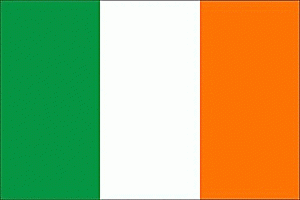 The National flag of green White and orange designed by Thomas Francis Meagher in 1848. The Green represents the older Gaelic and Anglo-Norman element of the population, while the Orange represents the protestant supports of William of Orange, while the White represents the peace between the two. “The tricolour concept had been around for many years — it was usually worn as a button or as a sash by supporters of O’Connell,” says Hearne. “However, it was not then regarded as a national symbol. Meagher recognised the potential of the tricolour as both a national symbol and a unifying force between Catholics and Protestants in Ireland.” Later, Meagher’s memory proved to be an inspiration for the leaders of the 1916 Rising, and in 1937 his tricolour was adopted as the national flag.
The National flag of green White and orange designed by Thomas Francis Meagher in 1848. The Green represents the older Gaelic and Anglo-Norman element of the population, while the Orange represents the protestant supports of William of Orange, while the White represents the peace between the two. “The tricolour concept had been around for many years — it was usually worn as a button or as a sash by supporters of O’Connell,” says Hearne. “However, it was not then regarded as a national symbol. Meagher recognised the potential of the tricolour as both a national symbol and a unifying force between Catholics and Protestants in Ireland.” Later, Meagher’s memory proved to be an inspiration for the leaders of the 1916 Rising, and in 1937 his tricolour was adopted as the national flag.
We are Closed!
Camden Fort Meagher is now CLOSED for the 2022 season. We look forward to welcoming visitors back to the Fort soon.
Some visitors may find parts of the terrain challenging and are advised to wear suitable footwear. Please ensure that children are supervised at all times.
Contact us for further information at 0214285219 or info@camdenfortmeagher.ie



